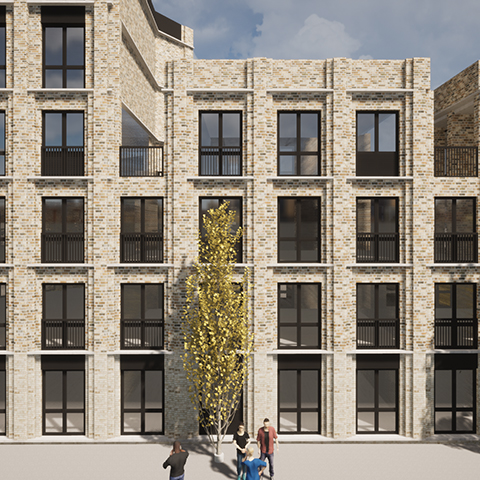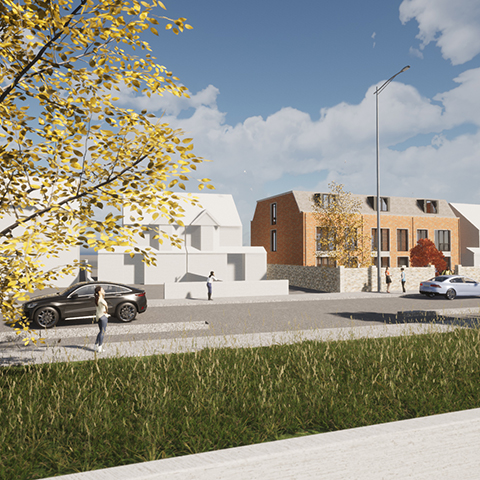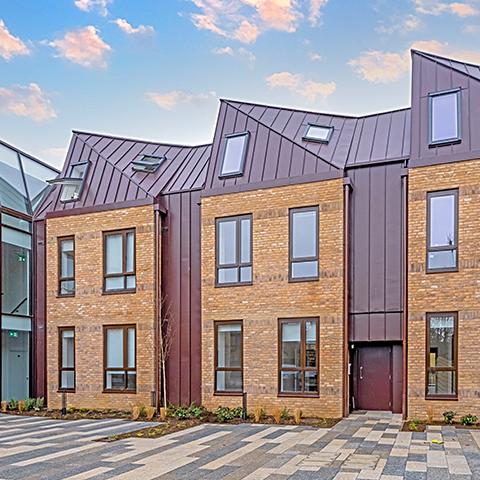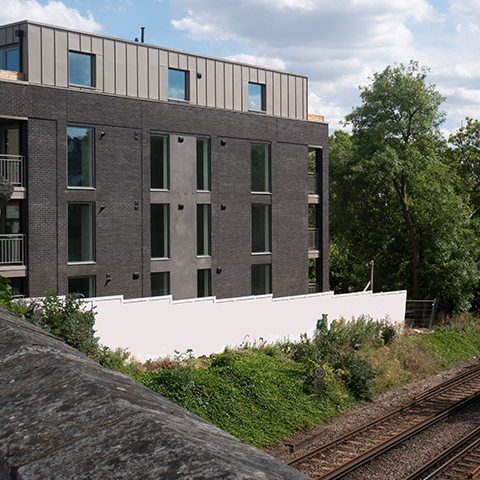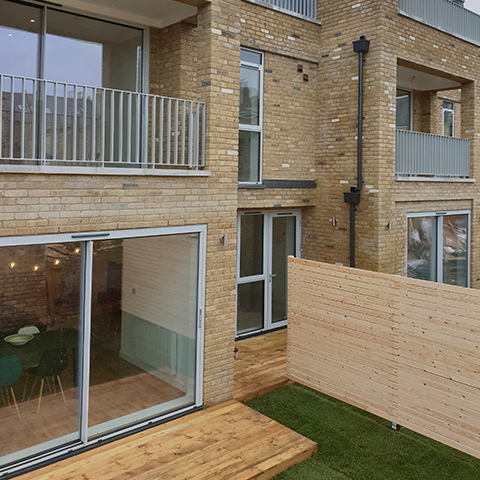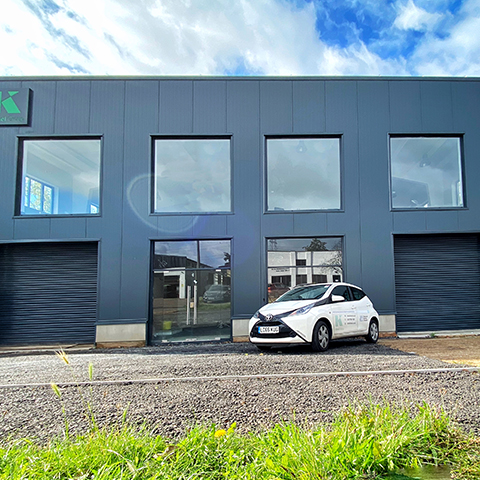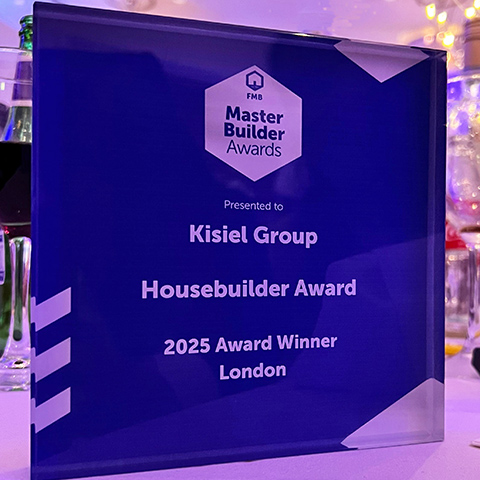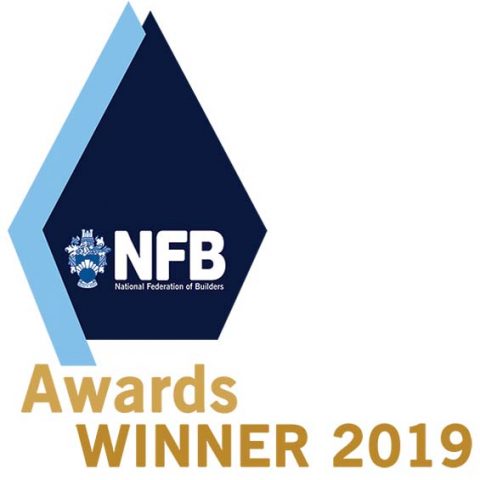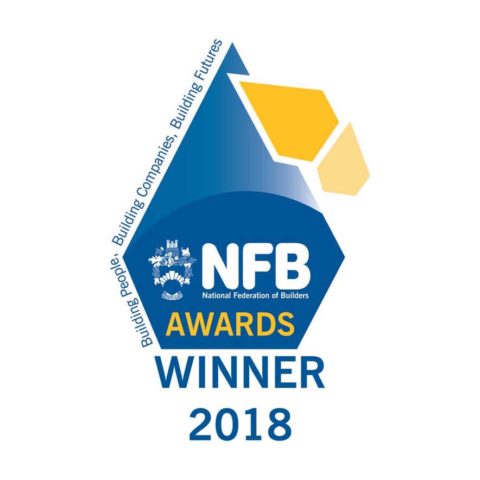How to Fund/Finance Your Property Development

What are your property development funding options?
Property development finance is a means to enable you to go ahead with your property development project. You may need to create a mix of equity and debt funding and probably the best way to demonstrate how this might work is to look at a couple of examples:
- Case study 1 – Nine units with a GDV of £4 million
- Case study 2 – Six units with a GDV of £9.8 million
The key things to think about are where you are looking for your development funding are, how is it structured and how much is it going to cost you.
Case study 1 – Nine units with a GDV of £4 million
Project scenario – A block of 9 apartments with planning permission approval
| Revenue | Net Sales Revenue for 9 units | £4,000,000 |
| Costs | Land (including acquisition costs) | £1,300,000 |
| Build costs | £1,400,000 | |
| Other costs | £440,000 | |
| Total costs | £3,140,000 | |
| Returns | Developers Margin | £860,000 |
| Return on GDV | 21.5% | |
| Return on cost | 27.4% |
Funding – a mix of equity and debt financing for the costs
Would you not prefer to be a successful property developer? Of course, you would! So make sure you download the Six Practical And Effective Tips To Make A Success Of Property Development today.
>> EXCLUSIVE <<
| Funding | Developer’s equity (2%) | £62,800 |
| Equity partners (18%) | £565,200 | |
| Senior loan (80%) | £2,512,000 | |
| Total funding | £3,140,000 |
Comments:
- Developer is only required to put in a small amount of equity.
- There is a need to find equity partners to finance the gap between the equity and the loan.
- As a Senior loan is a lower risk investment, you can normally expect to get loans to GDV of up to 60% with a current guide interest rate of 6-7% p.a. So, in this case rather than consider a Mezzanine loan to top up the lending, a Stretched Senior loan was used which meant the 60% loan to GDV can be increased to up to 70% of GDV (or 90% of total costs). However, the finance costs will increase to a current guide interest rate of 10-12% p.a. for the whole amount of the loan.

Case study 2 – Six units with a GDV of £9.8 million
Project scenario – A development of 6 houses with planning permission approval
| Revenue | Net Sales Revenue for 6 units | £9,800,000 |
| Costs | Land (including acquisition costs) | £3,300,000 |
| Build costs | £3,400,000 | |
| Other costs | £1,100,000 | |
| Total costs | £7,800,000 | |
| Returns | Developers Margin | £2,000,000 |
| Return on GDV | 20.4% | |
| Return on cost | 25.6% |
Funding – a mix of equity and debt financing for the costs
| Funding | Developer’s equity (10%) | £780,000 |
| Senior loan (75%) | £5,850,000 | |
| Mezzanine loan | £1,170,000 | |
| Total funding | £7,800,000 |
Comments:
- Developer is investing a larger amount of equity as compared to Case study 1 which is the full amount of equity funding on this development.
- The Senior loan is 60% of GDV and so has a current guide interest rate of 6-7% p.a. Rather than choose a Stretched Senior loan, the developer has chosen to top up the funding with a Mezzanine loan.
- Mezzanine loans are a top up to a Senior loan. You can normally expect to get loans to GDV of up to 70-75% with a current guide interest rate of 18-24% p.a. This interest rate is higher than the Senior loan as a Mezzanine loan is a riskier investment.
Stretched Senior loan versus Mezzanine loan
What will influence your choice between these two types of loan?
The cost of the loan is the most important consideration. Look at the interest rates and do a comparison of the different options so that you are choosing the most cost-effective way to finance your development projects.
Interest rates are not the only consideration – there are also charges such as, but not limited to, legal fees and valuation to take into account. There will be legal costs for each funding option – so this can mean three sets of charges. With regard to valuations, the best option is if everyone is able to agree to one valuation but sometimes each funding organisation can require a separate valuation which will incur additional costs.
If you decide on a Stretched Senior loan, you have the advantage that you are only dealing with one lender. Where there are two lenders involved in a Mezzanine loan you need to get agreement with both parties which can sometimes delay the start of a project.
Joint Venture funding
Joint Venture (JV) is a particularly good option for larger developments and can often be a partnership between developers, building companies and finance houses. The funding works where a single institution paying for all the costs of acquiring the land and building the development. There is an annual interest rate charged and then a ‘bespoke’ profit share agreement is put in place to split the final profit.
There is no risk for the developer but you will need to make sure that the development stays within budget and is completed on time. The developer is often incentivised to achieve the budget and schedule by keeping more of the profit. So, for example, if a build is due to be completed in 15 months, the developer might receive 65% of the profit but if the build gets delayed and ends up being completed in 18 months then the profit share could go down to 50%.
Lenders are usually expecting a 25% minimum return on GDV or 30% return on cost. They will also expect that you have the right team around you to deliver the project. If you are expanding your development capabilities from 3-6 units to now delivering 12 units, you will need to show some experience. JVs can be especially useful if you are doing a type of development you have not done before as it can bring valuable contacts and experience of similar past developments.

When do you start talking with lenders?
Start talking with them as early as possible as this gives you the headline terms for your finance which will then be subject to confirmation once you have found your property and can provide more detailed information on the proposed development.
Here are the types of the information you will need to confirm your lending terms, although your lender will specify what they need:
- Proven track record in development – showing you have experience in delivering projects of a similar type and size
- Asset and liability statement for main shareholders and directors
- Credit listing – if you have any historical credit issues it is important to declare them and give an explanation of the circumstances – don’t try to hide anything
- Description of the development and full investment appraisal
- Set of plans
- Planning permission status – to include information on Section 106 or CILS
- Evidence to support the proposed GDV is achievable
Property development finance in practice
Be realistic. It is not guaranteed that you will make the return you have predicted and so you need to check your assumptions, back it up with research, and plan the build with your main contractor – in that way you are only financing the amount you really need for the development. See further advice on cost planning to ensure the optimum level of funding is put in place here – Construction Cost Consultancy.
Two key things to remember:
- getting an experienced building contractor on board will enhance your funding opportunities
- speaking to good financial contacts will provide you with the most cost-effective funding plan.
Financing is critical to the success of your development. Your choice of development funding with vary from project to project – and you often need to mix and match the various options to fully fund a development. But make the right match and you are on your path to success!
